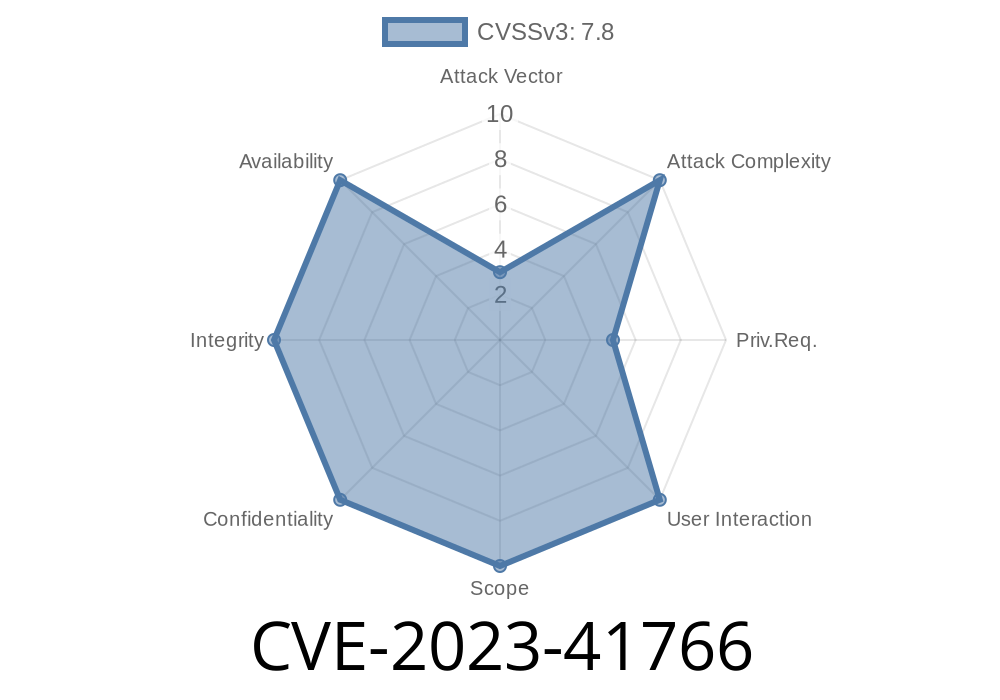The cyber world was shaken in late 2023 when Microsoft disclosed a new critical bug: CVE-2023-41766. This security hole affects the heart of Windows, the “Client Server Runtime Subsystem” (CSRSS), and lets hackers break out of normal limits and take control of Windows machines.
In this exclusive, we’ll break down what this flaw is, how it works, provide code snippets, and discuss how attackers exploit it. Let’s get started.
What is CSRSS?
CSRSS stands for Client Server Run-time Subsystem. It’s a core Windows process responsible for console windows, shutting down, and many critical internal functions. Because CSRSS starts with SYSTEM privileges, any weakness here is a big deal for security.
What is CVE-2023-41766?
CVE-2023-41766 is an elevation of privilege (EoP) vulnerability in Windows’ CSRSS. It allows an attacker who already has a presence on a machine (local access) to run code as a SYSTEM user—basically, taking maximum control. That means they can disable antivirus, mess with system files, or basically do anything.
- Affected Systems: Windows 10, Windows 11, Windows Server 2019/2022, and others.
Attack Vector: Local (needs a foothold like a regular user account)
- Severity: 7.8/10 (High) (Microsoft advisory)
How Does the Vulnerability Work? (In Plain English)
The flaw happens because CSRSS doesn’t properly check permissions before granting escalated rights during certain operations. A crafty attacker can fake or misuse certain Windows objects or APIs to trick CSRSS into letting their code run with SYSTEM-level permissions.
The attacker doesn’t need to crash CSRSS, just interact with it in a sneaky way.
2. Sample Exploit Snippet
Below is a simplified code snippet showing the kind of operation an attacker might use to abuse the flaw. This is illustrative only and NOT a full weaponized exploit.
#include <windows.h>
#include <iostream>
int main() {
// Step 1: Open a handle to the CSRSS process (running as SYSTEM).
DWORD csrssPid = ;
// Locate CSRSS. (In real attack, use EnumProcesses, etc.)
// Here, you'd get the CSRSS PID dynamically.
HANDLE hProcess = OpenProcess(PROCESS_ALL_ACCESS, FALSE, csrssPid);
if (!hProcess) {
std::cout << "[-] Could not get CSRSS handle.\n";
return 1;
}
// Step 2: Abuse poorly-checked CSRSS API, for example via a crafted message.
// Note: The real exploit uses Native APIs or special messages.
// Pseudocode:
// NtUserMessageCall or similar, with crafted parameters to escalate privilege
// Example (not real):
// NtUserMessageCall(csrssHandle, craftedMessage, ...);
// Step 3: On success, spawn a shell as SYSTEM
system("cmd.exe"); // Only works if process is now SYSTEM!
CloseHandle(hProcess);
return ;
}
*In a real attack, steps like token swapping or privilege manipulation would allow the attacker’s code to impersonate SYSTEM.*
Mitigation and Detection
- Patch ASAP: Microsoft has issued patches. See the official advisory.
Monitor suspicious process behavior: Look for privilege escalation by normal users.
- Use EDR/XDR tools: Many endpoint security tools can detect exploit attempts.
References
- Microsoft Security Advisory (CVE-2023-41766)
- Microsoft Patch Tuesday - October 2023
- CSRSS Internals
- Example Exploit Write-up (for similar bugs)
Closing Thoughts
CVE-2023-41766 shows us that *even the oldest parts of Windows can be a dangerous attack surface*. Privilege escalation bugs like this are gold for hackers, ransomware gangs, and APTs.
If you run Windows computers—patch now! And always review internal security for privilege escalation paths.
Timeline
Published on: 10/10/2023 18:15:18 UTC
Last modified on: 10/12/2023 22:18:04 UTC
